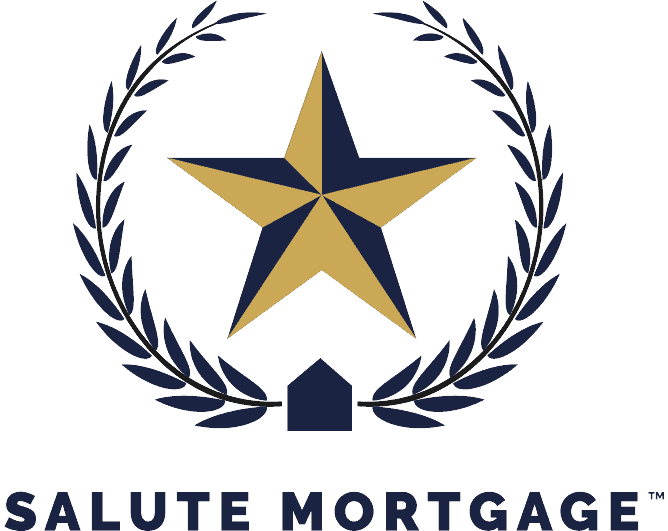Last updated: September 2025
Quick Answer
Homebuyers can combine VA loans and DSCR loans to execute the BRRRR strategy—Buy, Renovate, Rent, Refinance, Repeat—especially during PCS moves.
VA loans let you buy with zero down and live in the home, while DSCR loans offer a way to refinance into a cash-flow-focused investment loan after meeting occupancy requirements.
What is the BRRRR strategy?
BRRRR stands for Buy, Renovate, Rent, Refinance, Repeat. It’s a real estate investing strategy designed to recirculate your initial investment, allowing you to build a rental portfolio quickly.
Here’s how it works:
- Buy a property (ideally undervalued)
- Renovate it to improve value and rental appeal
- Rent it out to generate income
- Refinance to pull out equity or reset loan terms
- Repeat with a new property
BRRRR is traditionally used in conjunction with conventional loans or private financing; however, when structured carefully, it can be executed using a VA loan for the purchase and a DSCR loan for the refinance. It’s particularly effective for active-duty military or veterans during PCS relocations.
Can you BRRRR with a VA loan?
Yes. With clear planning and respect for VA occupancy rules, a VA loan can be used to acquire the “Buy” property in the BRRRR strategy.
Here’s what makes this possible:
- VA loans allow 0% down financing
- Renovate and live in the home during the occupancy period
- After fulfilling occupancy (usually 12 months), you may move and convert the home into a rental
- Refinance into a DSCR loan based on cash flow, not personal income
This structure is legal, common, and used by many military real estate investors.
Step-by-step: BRRRR using VA and DSCR loans
Let’s walk through how you can combine these two loans in sequence:
Step 1: Buy with a VA loan
- Use your VA entitlement to purchase a primary residence
- No down payment required
- Renovation costs can be paid out-of-pocket or financed via personal means
- Property must be owner-occupied within 60 days
Step 2: Renovate
- Make upgrades that increase market rent and appraisal value
- Improvements might include kitchens renovations, bathrooms, HVAC, or curb appeal
- Save all receipts; some DSCR lenders factor in renovations during appraisal review
Step 3: Rent
- After the VA-required occupancy period (typically 12 months), convert the home into a long-term rental
- Sign a lease with qualified tenants
- Maintain proper landlord insurance and documentation
Step 4: Refinance with a DSCR loan
- Apply for a DSCR loan to replace the VA mortgage
- Approval is based on the property’s cash flow, not your personal income
- If the Debt-Service Coverage Ratio (DSCR) is 1.25 or higher, you’ll often qualify for the best terms
- You may be able to pull out equity if the value has risen after renovation
Step 5: Repeat
- With your VA entitlement restored (if applicable) or cash available from the refinance, you can repeat the process at your next duty station or investment target
Why PCS moves make this strategy work
Military members are uniquely positioned to use this model. PCS orders allow you to:
- Legitimately satisfy VA occupancy rules, then
- Move and convert the property into a rental
- Refinance into a DSCR loan after departure
Because you’re required to relocate, lenders typically do not challenge the intent to occupy. This makes the VA-to-DSCR pipeline ideal for building wealth through serial real estate investing while in service.
Benefits of combining VA and DSCR loans
| Benefit | How It Helps |
|---|---|
| No down payment on purchase | Acquire properties with minimal cash upfront |
| Renovate and improve value | Boost rental income and appraisal for better DSCR |
| VA loan = low interest | Keep carrying costs low during the initial period |
| DSCR loan = flexible refi | Refinance without income docs or job verification |
| Repeat strategy | Build a rental portfolio with fewer capital limits |
By using VA to buy and DSCR to refi, you’re separating the acquisition and retention phases of your investment strategy—each with the right loan for the job.
What’s required to refinance into a DSCR loan?
To refinance your VA-financed property into a DSCR loan, you’ll need:
- 12 months seasoning (ownership and rental history preferred)
- Signed lease agreement showing market rent
- Appraisal with rent schedule (Form 1007)
- DSCR ratio of at least 1.00, preferably 1.25 or higher
- Property must be non-owner-occupied
- Minimum credit score of 660–680, depending on lender
- Downside: DSCR loans typically require 20–25% equity to qualify
Some DSCR lenders allow you to cash out equity, while others limit refinances to rate-and-term only, based on your goals and the lender’s guidelines.
FAQ: BRRRR with VA pr DSCR loans
Yes. As long as you occupy the home as your primary residence initially, you are allowed to convert it into a rental later.
Absolutely. Once the property is a rental, and you meet the DSCR income requirements, you can refinance into a cash-flow-based loan.
VA guidelines typically require 12 months of occupancy, unless you receive PCS orders or other qualifying circumstances arise.
You’ll buy the home using your VA benefit personally, but you can refinance into a DSCR loan under your LLC after converting the home to a rental.
Yes. Once the VA loan is paid off via refinance, your VA entitlement may be restored, allowing you to use it again for future purchases.
Let Salute Mortgage help support your BRRRR method
Combining VA loans for the purchase and DSCR loans for the refinance lets you apply the BRRRR strategy efficiently. This can be especially useful if you're an active-duty military member moving frequently.
It’s a legal, repeatable way to scale a rental portfolio over time without relying on W-2 income, large down payments, or full documentation.
If you're planning a PCS move or growing your investment portfolio, let Salute Mortgage show you how to match the right loan to your next real estate step.



